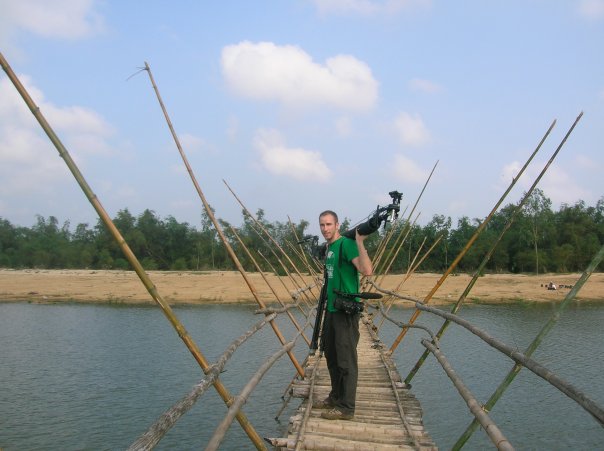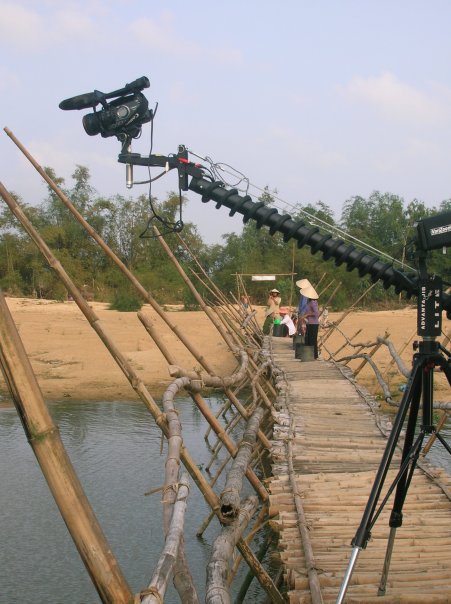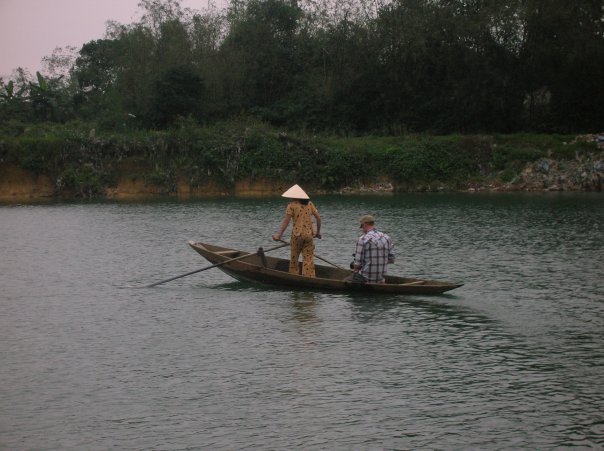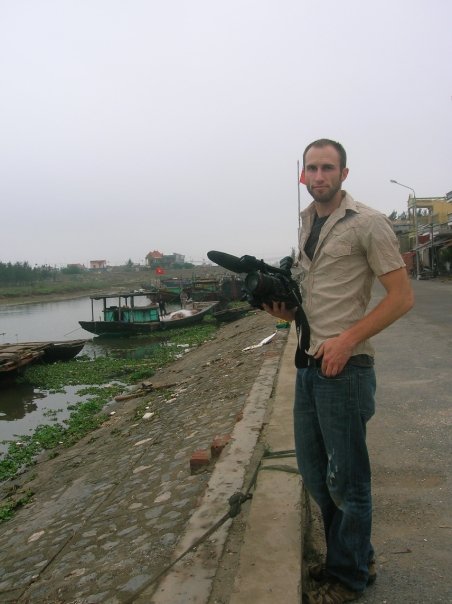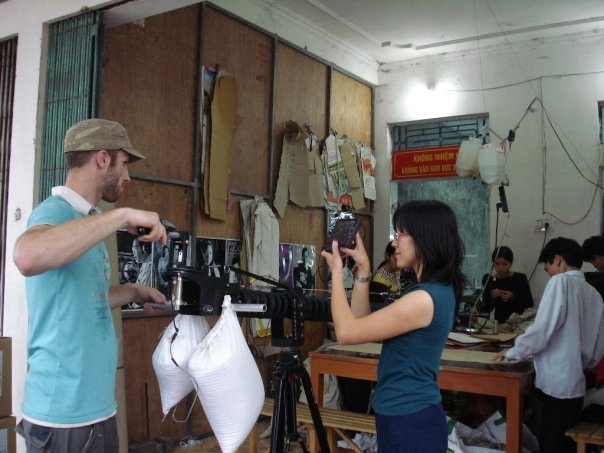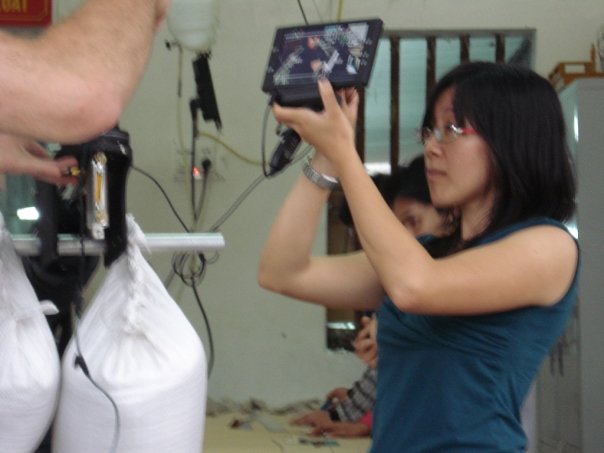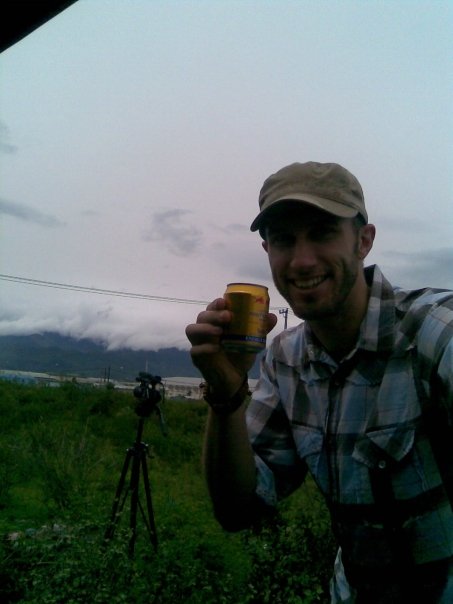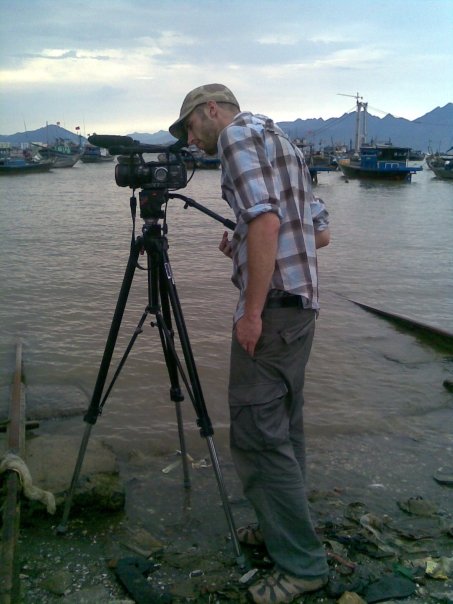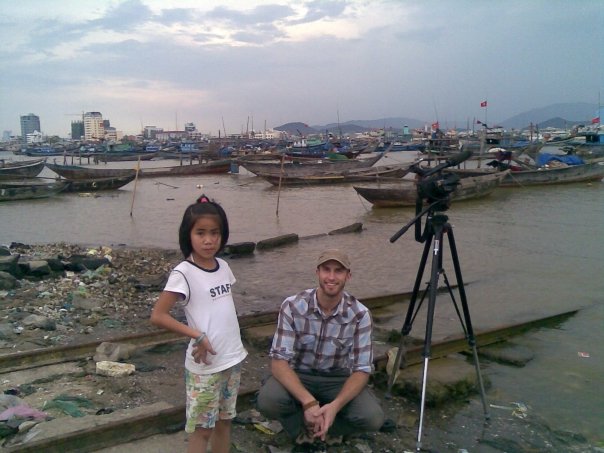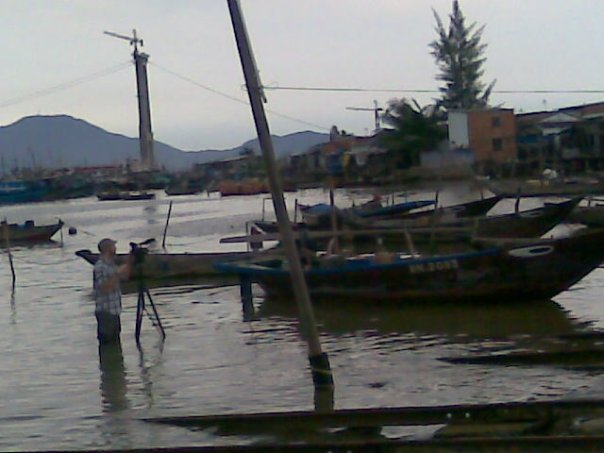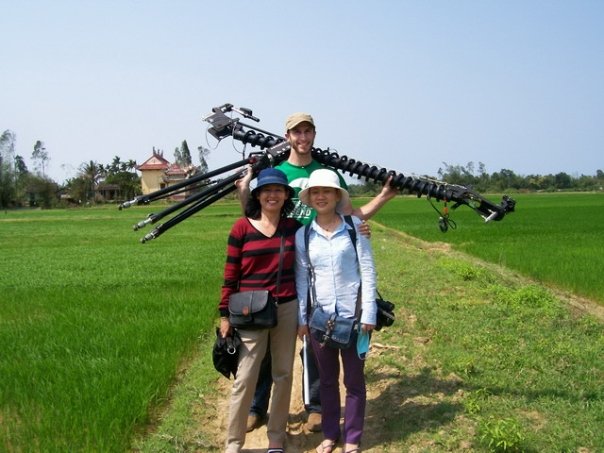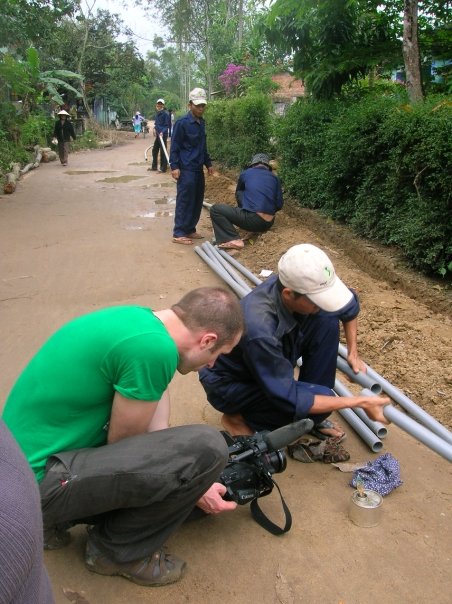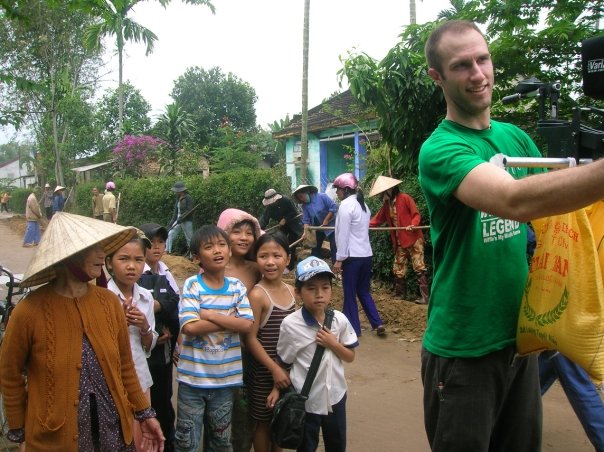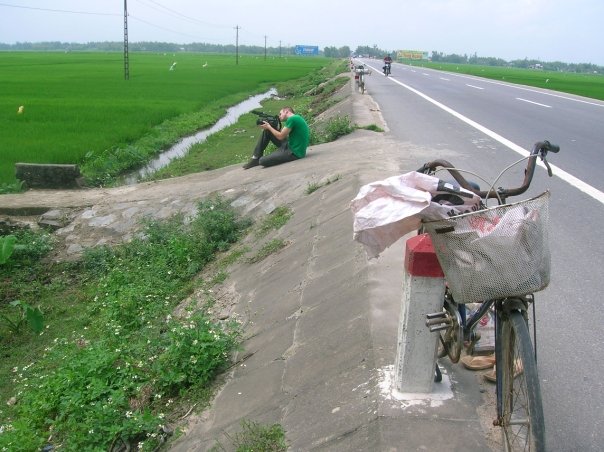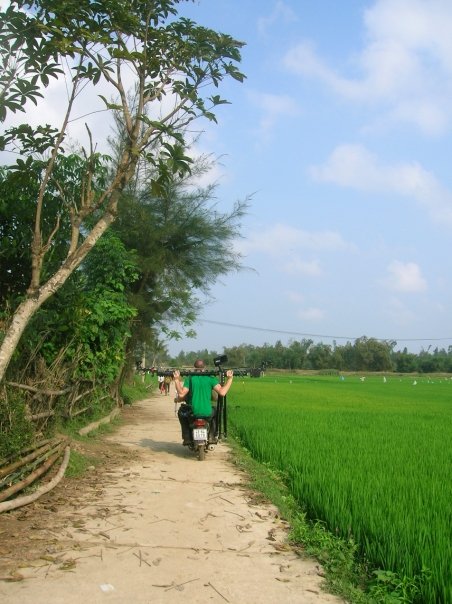In 2005, Stephen McGee was a man shaped by the world’s harshest histories. He had spent years documenting life in places marked by unimaginable trauma—Cambodia’s Killing Fields, Angola’s civil war, the genocide memorials of Rwanda. Despite the privilege of photographing the strength and grace of people who had survived so much, Stephen returned to California haunted by questions: What was his purpose now? Where could he truly make a difference?
Then came a phone call from the Detroit Free Press, asking if he’d move to a city he knew nothing about. Within five days, Stephen packed up and arrived in Detroit. What greeted him wasn’t the image most Americans had in their minds. The city’s landscape was scarred with abandonment, but to Stephen, it resonated—not with despair, but with potential. Having witnessed societies survive collapse and rebuild with dignity, he saw Detroit through the same lens.
Almost immediately, Stephen found himself between two Detroits: the one splashed across headlines as a failed car city, and another, quieter world where children took self-defense classes against gun violence, where neighbors held down blocks with love and pride. He began capturing it all—200 to 500 images a day, for years. He lived lean, often broke, making just $9,000 a year, but rich in access and trust. The people of Detroit let him in.
As he photographed abandoned buildings, he also saw—and more importantly, felt—the heartbeat next door. Detroit wasn’t empty. It was alive with culture, strength, music, invention, and joy. It just hadn’t been seen clearly.
Over nearly two decades, Stephen amassed over 1.6 million images and thousands of hours of film, forming an extraordinary visual archive of Detroit’s transformation. From its status as “America’s worst city” to being named the New York Times’ best city in the world to visit, his work silently traced the arc of that shift—not with slogans like “comeback,” but with real lives, lived.
During the pandemic, he spent 1,000 hours weaving that archive into a cohesive narrative. His goal: to distill Detroit’s complex, symphonic life without diluting it into headlines or clichés. It’s not just a film or a book—though both are in the works—it’s a living record. He envisions an interactive website and a large-scale outdoor exhibition that will walk people through Detroit’s story from 2005 to today, allowing visitors to hear the voices behind the images—from artists like Bill Harris and Gilda Snowden to the everyday Detroiters who define the city’s soul.
But Stephen doesn’t pretend this is his story alone to tell. A white man from California capturing life in a majority-Black city, he’s clear-eyed about the importance of sharing the spotlight. He’s collaborating with voices like Lauren Hood and Eric Thomas to ensure that the full spectrum of Detroit’s story is told—not just from one lens, but from many.
In the end, McGee says, “Yes, I was there when Detroit was called the worst city in America. But I was also there when Grace Lee Boggs labored over her words, when Gilda melted wax, when my daughters were born on Jefferson Avenue. I was there when Detroit wrote its poetry, lifted its voice, and reminded the world: We never left.”
Stephen McGee didn’t just move to Detroit. He became part of it. And with every frame, he’s helping the world see what Detroiters have always known: This city is not a ruin—it’s a revelationStephen McGee is a filmmaker, storyteller, and father who has spent years documenting the untold story of Detroit—its transformation, resilience, and heartbeat. A Californian by birth, McGee arrived in Detroit and saw not just a city rebuilding but a cultural engine with the power to influence the world. When others spoke in corporate taglines and abstract campaigns, McGee offered something simple and powerful: “Move here. Move the world.”
This idea sparked a marketing campaign, but Stephen knew real impact goes deeper. Behind the slogans were people, places, and lives that needed to be seen. For the past decade, he’s filmed Detroit’s evolving soul—from entrepreneurs and urban farmers to musicians, boxers, and the massive renovation of Michigan Central Station. The result is a vast archive ready to become both a feature film and a 20-part documentary series.
For Stephen, Detroit isn't just a subject. It's home. It’s where his children go to school, where neighbors greet each other with a nod and eye contact, and where cultural history lives in every block—from Motown to techno, from the North End gardens to late-night DJ sets at Pyramid of Sound.
He speaks with reverence about Detroit’s Black legacy—the strength born in the '30s through the '60s that shaped the city today. He sees the city's hospitality not as branding, but as a way of life, where how you show up matters. “Come correct,” he says, echoing Visit Detroit’s ethos.
Stephen celebrates the city’s food scene—Johnny Noodle King, Sister Pie, Selden Standard—and its rebirth, as chefs and creatives bring life back to empty buildings. He marvels at the contrast: a place once ignored now attracting world-class talent and investment.
Through it all, McGee reminds us that Detroit’s magic isn’t found in tour guides or billboards. It’s in barbershops, basement music venues, and Sunday rides with Electric Thursdays—grassroots energy that reclaims the narrative.
But Stephen’s vision doesn’t end at Eight Mile. Northern Michigan, where his parents now live in Elk Rapids, holds deep roots too. A place he compares to California’s coast, except more untouched, drinkable, and soulful. From family road trips to filming poets at Point Betsie Lighthouse, he sees the Great Lakes region as the quiet answer to America’s most pressing questions—about water, land, climate, and sustainable living.
For Stephen McGee, Detroit and Michigan are not just places to document. They're the epicenter of a new American future—one rooted in community, creativity, and connection. Through his lens, what others overlook becomes a mosaic of meaning, a story that’s been there all along, waiting to be seen.Stephen McGee reflects on his personal and professional journey with Detroit, beginning in 2005. Initially drawn by an opportunity to start a video department at the Detroit Free Press, McGee felt a deep calling to contribute to a city often misunderstood and misrepresented in the national narrative. Despite warnings against moving to Detroit, he was compelled by the city's raw potential and the warmth of its people.
McGee compares Detroit to his international humanitarian work, where he found beauty and strength in adversity. Having traveled through ruins of ancient civilizations and witnessed global struggles, he returned to the U.S. searching for meaning. Detroit offered that purpose — not as a subject of pity, but as a foundation for untold, powerful stories.
He recalls how the early 2000s tech shift (e.g., Craigslist) disrupted traditional journalism, creating an opening for video storytelling. McGee's ability to bridge photography, video, and software skills made him one of the first newspaper filmmakers in the U.S., helping legacy outlets pivot to digital storytelling.
Over time, McGee’s work evolved from focusing on abandoned buildings and broad cityscapes to deeply human narratives embedded in Detroit’s neighborhoods. He became acutely aware of his own privilege as a white male and increasingly prioritized community-led storytelling. His long-term residency allowed him to build real relationships across the city, contributing to a nuanced and layered understanding of Detroit’s challenges and its cultural wealth.
McGee describes key projects, including work with the Kresge Foundation, UNESCO’s City of Design campaign, and marketing pieces for Quicken Loans and Amazon HQ2. These efforts culminated in high-profile productions involving talent like Big Sean and Jessica Care Moore. One signature campaign, “Move Here, Move the World,” aimed to reframe Detroit not through clichés of revival, but as a globally impactful city worth investing in.
Throughout, McGee critiques simplistic narratives of Detroit's “comeback” and stresses the importance of respecting the lived experiences and agency of its residents. He believes that the true power of Detroit lies in its people, its authenticity, and its potential to inspire broader conversations about America’s identity and future.
When Stephen McGee first came to Detroit in 2005, he arrived sight unseen, answering a call from the Detroit Free Press to help launch a new video department. Fresh off years documenting human stories around the globe—from ancient ruins in Cambodia to post-conflict zones in Uganda—McGee was looking for purpose. What he found in Detroit wasn’t just a city in flux—it was a story waiting to be told, one of resilience, warmth, and transformation that the national narrative had long overlooked.
To many outsiders at the time, Detroit was considered a place of ruin and decay. Friends warned him his career might die there. But to McGee, those warnings sounded more like an invitation. He had just come from places the world had once written off, only to find rich, untold human stories. Detroit, he sensed, was no different.
Armed with a camera and an open heart, McGee immersed himself in the city—not to capture its crumbling buildings as symbols of loss, but to find the lives unfolding just beside them. He turned his lens toward the people holding down blocks, lifting their communities, and rewriting what Detroit could be. His philosophy was simple: If everyone’s pointing their cameras at the ruins, he’d turn his tripod slightly to the left or right—and find beauty, strength, and humanity.
Over the past 18 years, McGee has quietly amassed millions of images and thousands of hours of film, documenting not just Detroit's physical transformation but also the emotional and cultural pulse of its people. He’s worked from the streets with next to nothing—once living on $9,000 a year just to keep telling stories—and from network studios, capturing iconic cityscapes used on national broadcasts during Lions and Tigers games.
His recent piece in Hour Detroit magazine reflects a deeper concern: that the story of Detroit’s comeback too often ignores the communities who’ve carried it through its darkest years. Particularly, he points to how the city’s Black residents—who built its musical, cultural, and economic backbone—have been excluded from the narratives told about its beauty and renewal.
McGee doesn’t claim to have all the answers. As a white Californian, he speaks with humility about continually learning how to tell Detroit’s story responsibly. Conversations with Detroiters like Marsha Music, Bryce Detroit, and others have helped shape his understanding of the city's complex layers.
Now, McGee believes Detroit isn’t just rebuilding—it’s quietly becoming a model for the world. He sees parallels between what happened in San Francisco with the rise and decentralization of tech and what could happen next in the Great Lakes region. As the West Coast becomes overcrowded and untenable for many, he sees signs of migration and energy shifting toward cities like Detroit—strong, soulful, underestimated cities.
For McGee, Detroit isn’t just a subject. It’s a collaborator, a teacher, a muse. And after nearly two decades, he remains devoted to the people who welcomed him, trusted him, and helped him turn a collection of images into something much more profound—a living narrative of a city defining its future from the inside out.
The Story of Filmmaker Stephen McGee: A Detroit Visionary
For over two decades, filmmaker Stephen McGee has been quietly capturing a story that few dared to tell—not just of a city, but of a people, of resilience, and of the future forming within the forgotten.
Born outside Detroit, McGee moved to the city in 2005, drawn not by opportunity, but by something deeper: a calling to bear witness. What began as short films and photo essays soon grew into a massive visual archive—millions of images, thousands of hours of footage, all dedicated to Detroit. While headlines across America portrayed the city as a symbol of collapse, McGee saw something else: transformation in motion.
He embedded himself in Detroit’s neighborhoods, becoming known not just as a filmmaker, but as a trusted documentarian of local voices. His work—often shot with cinematic precision and an artist’s eye—began earning acclaim. He became a two-time Emmy winner, worked with global brands and nonprofits, and even gave a TEDx talk on storytelling with drones.
But the cornerstone of McGee’s career is a singular, monumental project: Resurgo:Detroit. Twenty years in the making, this feature documentary weaves together the voices of poets like Jessica Care Moore, artists, musicians, activists, athletes—even the spirit of a city’s football team. It’s a film that traces how Detroit’s collapse wasn’t just an ending—but also a beginning, planting seeds for a new kind of American future.
In 2024, the film caught national attention when WXYZ and ROAR Detroit reported that Resurgo:Detroit had become an Oscar contender, hailed for its poetic realism and emotional depth. For McGee, it wasn’t about awards—it was about giving Detroiters back their narrative.
As he told Michigan.org, the city’s story isn’t about being saved—it’s about rediscovering power within. That belief drives his Resurgo YouTube channel, a studio-meets-travel doc series blending the grit of the Rust Belt with the imagination of what America can become.
Stephen McGee is not just telling Detroit’s story. He is proving that the heart of America’s renewal might just be found in the places most people left behind—and that sometimes, the future is forged not in headlines, but in hidden foundations waiting to rise.




